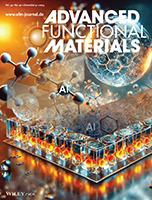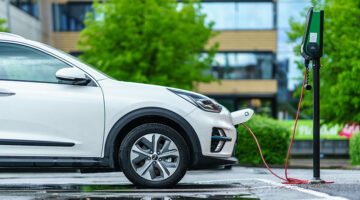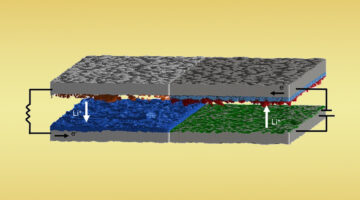High-energy Li-ion batteries can provide both high capacity and high voltage, both of which are important in electric vehicles for greater range and faster acceleration. Here, researchers untangled the contributions of nickel and cobalt in high-energy Li-rich battery cathodes, pointing the way to optimizing them via a compositional approach. Read more »
Tracking Platinum Movement on Fuel-Cell Electrodes
Researchers tracked the movement of the platinum nanoparticles that catalyze reactions in polymer electrolyte fuel cells (PEFCs) and correlated this movement with nanoparticle degradation. The results yielded solutions that can immediately reduce platinum waste in emission-free heavy-duty fuel-cell vehicles. Read more »![]()
![]()
“Computer Vision” Review of X-Ray Movies Leads to New Insights
Using a type of machine learning called “computer vision” to mine data from x-ray movies, researchers made new discoveries about the reactivity of a material in rechargeable batteries. The results suggest that optimizing the carbon layer thickness on the electrode surface could help researchers to design more efficient batteries. Read more »
Influences of Metal Electrodes on Stability of Non-Fullerene Acceptor-Based Organic Photovoltaics
Researchers investigate interfaces in an organic photovoltaic device, revealing that the aluminum (Al) top electrode undergoes thermally activated diffusion into inner layers forming ionic and organo-metallic-like species, compromising long-term device performance. Chemical degradation process is characterized by 27Al solid-state NMR and X-ray photoelectron spectroscopy. Read more »
Why Do Batteries Sometimes Catch Fire and Explode?
In order to better understand how a resting battery might undergo thermal runaway after fast charging, scientists are using a technique called “operando x-ray microtomography” to measure changes in the state of charge at the particle level inside a lithium-ion battery after it’s been charged. Read more »
Internal Currents in Lithium Batteries after Fast Charging
In lithium batteries after fast charging, researchers measured the persistence of internal currents and found that large local currents continue even after charging has stopped. The work uses hard x-ray 3D imaging in a novel way and sheds light on the causes of thermal runaway and the catastrophic failure of lithium batteries at rest. Read more »![]()
![]()
Spectroscopic investigation of a Co(0001) model catalyst during exposure to H2 and CO at near-ambient pressures
We have performed near-ambient-pressure X-ray photoelectron spectroscopy on Co(0001) model catalysts during exposure to gases relevant to Fischer–Tropsch synthesis, i.e., CO and H2, at 0.25 mbar total pressure. At this pressure, CO seems to be more efficient at keeping the Co(0001) surface metallic than H2, which is the opposite behavior as reported in the literature for other pressure ranges. Read more »
A Deep-Learning Analysis of Lithium-Plating Dynamics in Batteries
Lithium-metal solid-state batteries are a promising technology, but the deposition (plating) of lithium metal on electrode surfaces remains a significant technical hurdle. Here, researchers used micro-computed tomography data to train an artificial intelligence model to identify characteristics vital to improving battery performance. Read more »![]()
Will Chueh to Receive the 2023 Shirley Award
Will Chueh of Stanford University is the 2023 winner of the Shirley award for Outstanding Scientific Achievement at the ALS. His selection recognizes Chueh’s deep contributions in operando soft x-ray spectromicroscopy for imaging electrochemical redox phenomena—images and movies for battery and electrocatalytic reactions. Read more »
Eco-Friendly Processing of Organic Photovoltaics
Researchers controlled the mixing of electron-donating and -accepting constituents of an organic photovoltaic (OPV) material made using a process that replaces toxic solvents with water. With efficiencies comparable to less eco-friendly OPVs, this material shows promise for many advanced device and building applications. Read more »![]()
![]()
- « Previous Page
- 1
- 2
- 3
- 4
- 5
- …
- 16
- Next Page »









